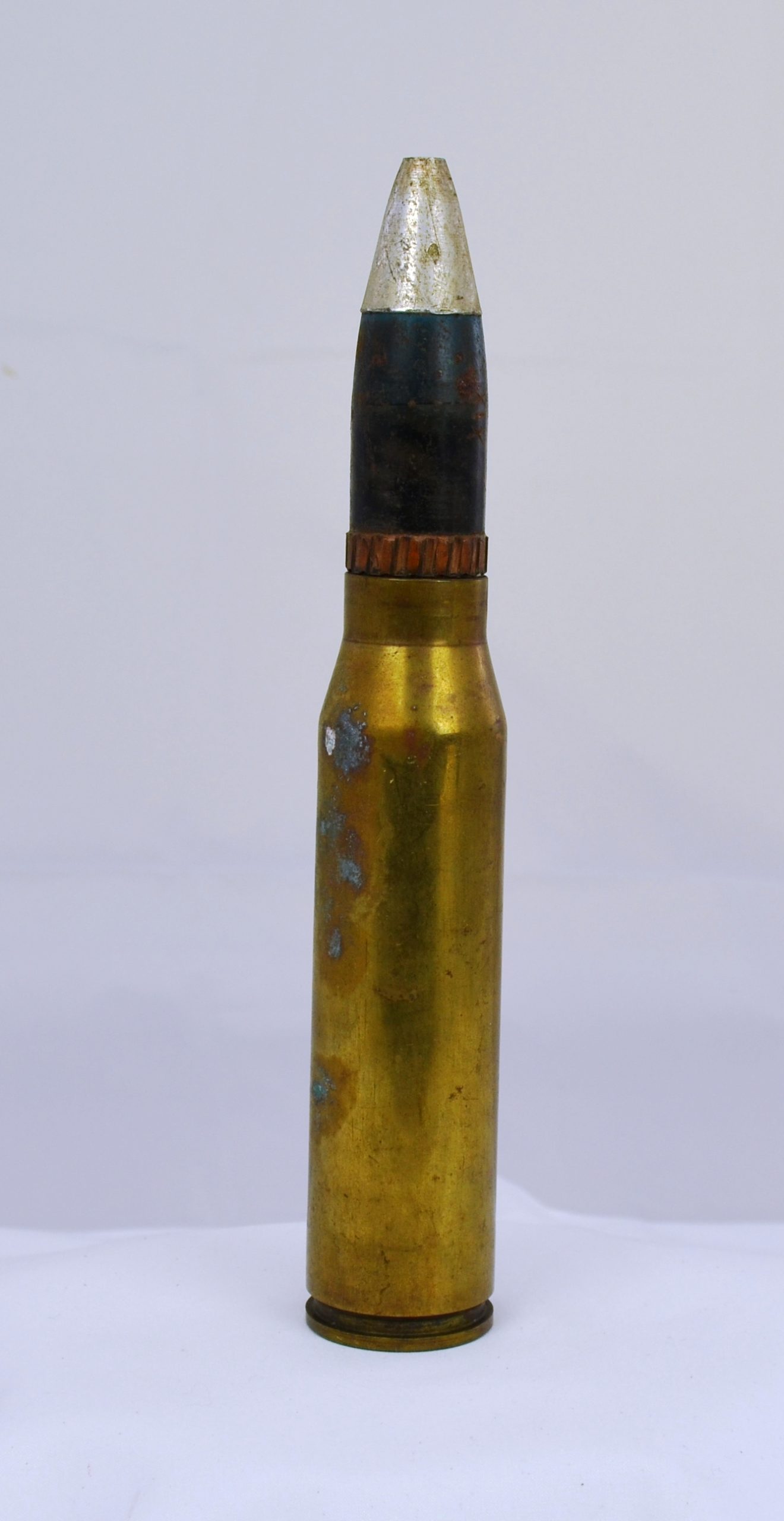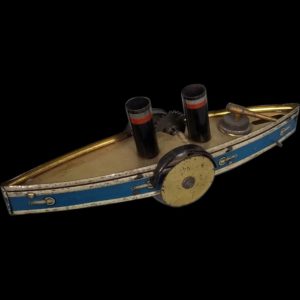INERT/DEACTIVATED. THIS IS A NICE EXAMPLE WITH STAMPS TO BASE 91, 30MM, RG, 008, IT HAS A STEEL PROJECTILE WITH ALLOY NOSE CONE PROJECTILE.
The weapon uses a long recoil system of operation, for minimum recoil forces on the mounting and vehicle, Spent cases are ejected forwards. The weapon was also designed for minimum inboard length, allowing for more space in the turret or a smaller turret overall. Another feature is that no gun gas escapes into the turret.
The cartridge case used is 170mm in length, and is based on the Hispano-Suiza 831-L round. Unlike the belt-fed or drum-fed systems on many vehicle weapons, Rarden is loaded manually with three-round clips. Each three-round clip is loaded into the magazine as a unit, similar to the 5-round clips of the Bofors 40 mm cannon. The magazine can hold two 3-round clips at a time. This limits its capacity to fire in automatic mode to 6 rounds. The Rarden gun does not require an external power source and can therefore remain in action even if the vehicle is disabled, provided that provision is made for manual traverse and elevation of the turret or mount and for sighting the weapon.
The Rarden is, or has been, fitted to a number of armoured vehicles in the British Army:
-
FV721 Fox armoured car
-
FV107 Scimitar tracked reconnaissance vehicle (part of the Combat Vehicle Reconnaissance (Tracked) or CVR(T) range)
-
Sabre — FV101 Scorpion with turrets taken from Fox Armoured cars (also in the CVR(T) range)
-
FV510 Warrior infantry fighting vehicle, and some of its variants




